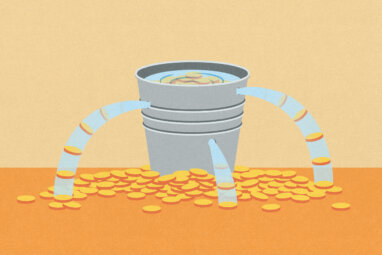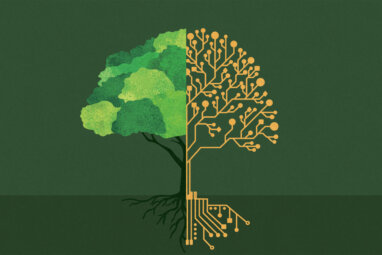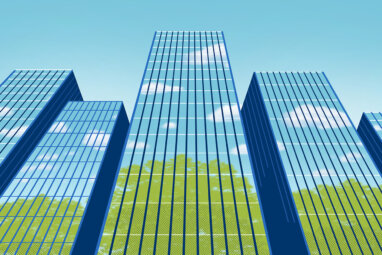Sustainability Redefined: Setting a Goal of a Flourishing World
Sustainability is more important in the business world than ever before. So why isn’t it working?
Topics
Leading Sustainable Organizations
Sustainability — it is on almost every corporate manager’s mind, but few are putting their thoughts into action. These are one of the key findings of the recent MIT SMR/BCG annual report Sustainability’s Next Frontier.
This situation hasn’t changed much over many years — the main difference being that, 20 years ago, the very idea of sustainability was foreign to many firms. Most had established safety, health, and environment departments (SHE) to handle growing pressures to take care of the environment and the health of their employees (at least while on the job).
The context changed in 1987 with the publication of the UNCED report (Brundtland report) that both defined sustainable development and placed it squarely in the public eye. The first Rio Environmental Summit in 1992 made it a priority in the corporate sector, with the newly formed World Business Council on Sustainable Development (WBCSD) leading the way.
Early corporate efforts built most of their sustainability efforts (the development half became tacit over the years) around eco-efficiency — that is, providing equal or greater value but with less environmental impact. Corporate social responsibility (CSR) got added along the way. New composite metrics emerged, with John Elkington’s triple bottom line (TBL) as the model.
Lurking beneath firms’ commitments and resources to sustainability was an assumption that the world would become sustainable as more and more firms reduced their relative burdens. The problem with this idea is that while a company’s increase in eco-efficiency is measured by comparing current burdens to past burdens, the deteriorating state of the world comes from the total global burden — that is, the burden of all past plus all present activities.
Using less fuel or producing less waste today does not, unfortunately, erase the products of last year’s less-efficient practices; nor does it make up for the increase in output that, efficiencies notwithstanding, must accompany a company’s expansion. The WBCSD had overlooked or ignored the limitations of relying on efficiency improvements to reduce ecological destruction.
As a result, the world is more unsustainable now than in 1972 in spite of the sustainability programs of firms worldwide. I have written in Sustainability by Design that what firms are doing is reducing unsustainability, but this is not the same as creating sustainability.
And we are still losing ground. Continued economic growth, coupled with globalization and increasing population, will eventually overcome any reasonably expected efficiency gains.
Sustainability strategies and programs, although meritorious, fail to address the fundamental causes of unsustainability. The proximate cause is economic growth beyond the capacity of the planet to support our affluent lifestyles and levels of consumption. Growth is necessary to bring the poor out of abject levels of poverty, but present economic policies have only increased inequality, leaving many of the poor further behind.
Ironically, the underlying goal of “sustainability” as used in this fashion is to keep growing indefinitely — assuming, as economists do, that the role of business is to provide more and more material wealth, thereby (presumably) increasing aggregate well-being. This goal has been maintained in the shadow of clear signals that this road to sustainability is self-defeating, and against evidence of growing human suffering and environmental degradation.
It took me a while to recognize the connection between sustainability and growth. The word “sustainability” itself is misleading. As a noun, it is meaningless in practice unless it refers to some thing that is to be sustained. It is, in fact, a question in need of answering: can we sustain growth? Can we sustain our population? Can we sustain our lifestyle? Is there an ability to sustain any of these things?
As currently used, sustainability refers to all of these things: growth, population, and lifestyle. There is a hidden teleology in how the word is used: just keep on innovating and growing, and life will become better and better. Given any reasonable forecast of future eco-efficiency gains, growth will have to stop, leaving us mired along the way, if we are to avoid the depletion of all ecosystems on this planet.
It’s clear that we have to stop growing at some point — but what point?
My former student and now colleague, Andrew Hoffman, and I have made the argument that it is imperative to pick something other than growth to sustain. Growth is, ultimately, a measure of quantity; we suggest instead a measure of quality. For us, that something is flourishing — a measure of the fullness of life, not some material metric. Flourishing, as our book of the same title proposes, comes when one can say that life’s cares are being attended to — when every human being is successfully caring for themselves, other humans, and the non-human world that is vital to our maintenance.
This concept of sustainability as the creation and maintenance of flourishing would require the corporate world to think of its businesses in a fundamentally different way. In this model of economic interactions, business’s primary role would be to enable people to flourish — that is, take care of the world around them. Such a world would be very different from what we see today. Eco-efficiency and CSR would still be on the agenda, but the creation of flourishing would come first.
It’s obvious this would require radical change. Corporations’ basic strategies would move from satisfying needs (or wants) to enabling care. Sustainability practices as understood today would still be important for managers, but would be completely intertwined with and inseparable from whatever basic strategy is driving a firm. There would be no more specialized sustainability surveys, such as the current MIT SMR/BCG report; only composite assessments of contributions to flourishing. While profit would continue to be important to a firm’s success, it would take a backseat to the firm’s contribution to flourishing.
Today, we are very far from the creation, much less the sustaining, of a flourishing world. Even more than the challenge of being first to market new revolutionary Internet devices will be the offering of the first products designed to enable people to care for themselves and others. When enough such offerings hit the market, then and only then will we be able to talk about sustainability and both understand and mean what we say.






Comments (2)
Jacob Mayne
James Greyson